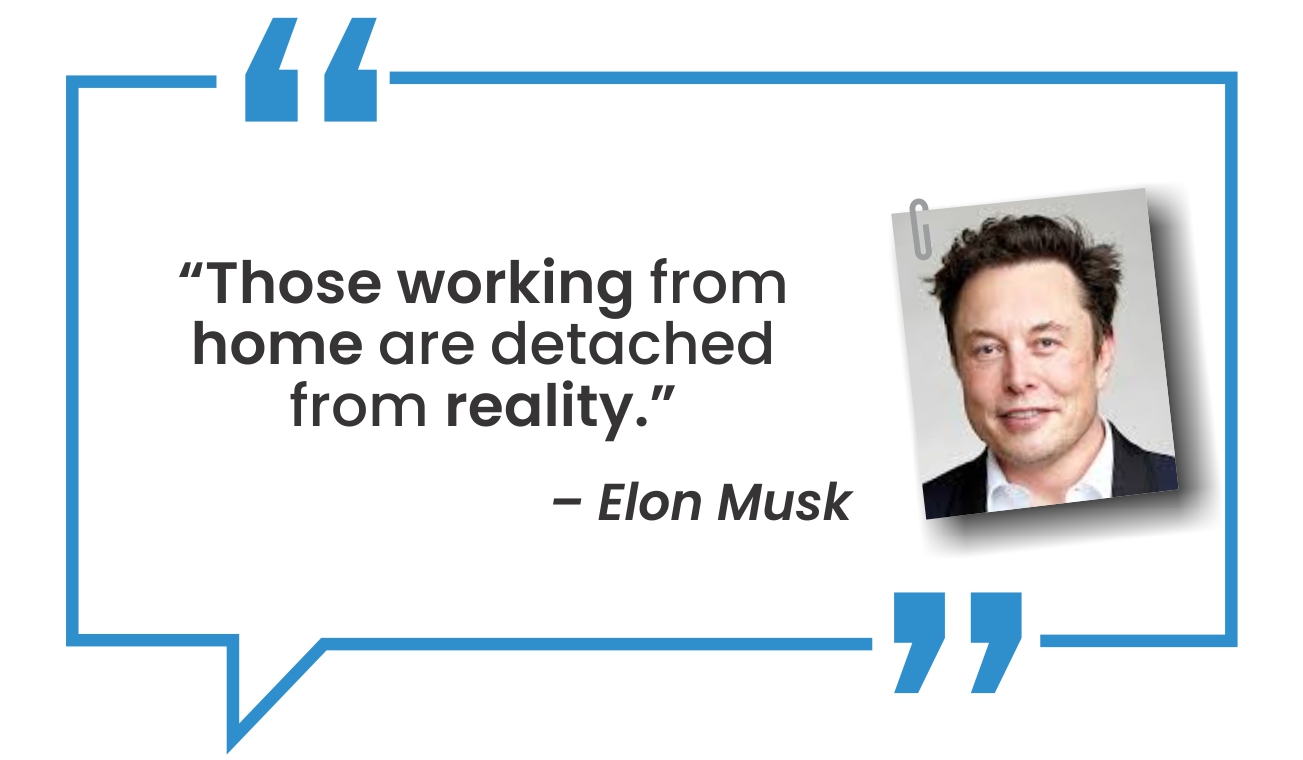Why in the news?
Recently, CII and Faculty of Management Studies (FMS), University of Delhi published a first-of-its-kind study titled "Work-from-Home: Benefits and Costs; An Exploratory Study in the Indian Context".
Key Findings of the Report
- Sustenance of WFH: 68 per cent of the companies reported continued use of WFH/remote working practices post the COVID-19 pandemic.
- Hybrid model of work: Almost half companies studied promoted the hybrid work practices i.e. employees are expected to come to the office for a limited period in the week.
- Short-term gains and long-term losses: WFH confers tangible benefits for both employers and employees in the short term but may lead to some intangible losses relating to the formation and sustenance of social, emotional, and human capital in the long term.
- Effectiveness of remote working: It may be less effective for creating and sustaining collaborative work cultures by fostering communication and teamwork compared to traditional office-based work practices.

Evolving nature of Work: Advent of WFH
- COVID-19 Pandemic: Restrictions to movement forced due to the pandemic necessitated a shift to remote work.
- Technological development: Advancements in personal technology and digital connectivity have aided in realizing the potential of remote working.
- Work from Anywhere: Due to rise of digital connectivity and related infrastructure development, many employees are considering working from their villages, travel destinations etc.
- E.g. advent of concepts like digital nomads (location independent lifestyles).
- Rolling back of WFH: However, many employers globally are rolling back the WFH arrangements post-pandemic.
- E.g., Companies such as Starbucks, Google and Amazon have rolled back WFH with return-to-office schedules.
Benefits connected to WFH
Particulars | Benefits connected to WFH |
Employees |
|
Employers/Corporates |
|
Macro Environment |
|
Family Relationships |
|
Women |
|
Challenges arising from WFH
For Employees
- Separating work and home: WFH results in blurring of the boundaries between home and office, temporally and spatially, potentially leading to stress, and low productivity.
- A recent study has shown that working from home during COVID-19 pandemic adversely affected several lifestyle aspects such as 33% reduction in daily physical activity.
- Workspace constraints: Lack of segregated space for focused work at home may impact work and increase costs related to working at co-working spaces.

- Lack of rest and leisure: Virtual work can create an unhealthy cycle of working all the time, or creating pressure to be available 24/7, or feeling like you constantly need to catch up.
For Employers
- Intra-organisational communication: Coworker bonding is vital for teamwork and collective problem-solving. Virtual interactions may impact team bonding, work culture and organizational success.
- Management methodologies: Employee training and mentoring, and innovation suffer when workers are not working on-site. E.g. Traditional supervision methods like attendance monitoring becomes less effective.
- Professional isolation: It is challenging for organizations to ensure that employees are not alienated or isolated from the work environment, which may impact the quality of work by the employee.
- Privacy issues: Protection of organizational and client data is challenging due to WFH.
- E.g. India lacks a dedicated law on cybersecurity.
- Questioning morality: Elon Musk questioned the morality of allowing a section of employees to WFH while others, such as factory workers must continue working on-site.
For Family Relationships
- Familial stress: Strained work prospects and strained familial ties mutually reinforce each other. Extended indoor confinement can create strains in familial ties. E.g. Domestic violence cases rose during pandemic.
- Family commitments: Duties like childcare or elderly care related issues while working increases burden.
- Mental health: Lack of social interactions and tensions of work and home increases stress and anxiety, impacting treatment of family members. E.g. Being impulsive and angry with child due to a bad day at work.
For Women
- Roadblock to professional success: Women who work remotely can end up earning less and enjoying less visibility within the company than male counterparts who spend most of their time at the office.
- Double burden: Women face double burden of work and traditional gender roles, amplified due to WFH. E.g. Cooking is seen as a women's job irrespective of formal employment.
- Reinforcing patriarchal ideas: Women who opt for flexible arrangements may be stigmatized more than men for what is seen as prioritizing family over work.
Way forward
- Reformed work arrangements: Changing nature of work requires change in management practices, systems, and philosophy. E.g. performance monitoring mechanisms
- Hybrid ecosystem: It provides a balanced approach, adopting best practices of traditional and remote work.
- Policy Considerations: Governments and Organizations need to develop clear policies in line with the evolving nature of work with considerations like accountability, privacy etc.
- Infrastructure development: Remote work needs reliable connectivity available at all locations. Internet infrastructure in remote areas needs to be strengthened. E.g. 'Smart Villages', Bharatnet.



